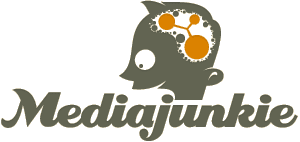Nearly a year ago, on my birthday, my contribution to the “why I…” series at the Code for America went live. I’m reprinting it here to keep a copy in my own storehouse, and because I am mentoring for the accelerator again this year:
 I’m mentoring for America because I believe that a small-team startup-style approach to civic engagement can vastly improve the tools we collectively build for governing ourselves. From the day I first heard Jen Pahlka was launching this venture (can I call it that?) I’ve loved the idea and wished for ways to contribute. When the Accelerator program came along, I was given the opportunity to lend my background in user experience and product design to folks trying to refine how government and community work together.
I’m mentoring for America because I believe that a small-team startup-style approach to civic engagement can vastly improve the tools we collectively build for governing ourselves. From the day I first heard Jen Pahlka was launching this venture (can I call it that?) I’ve loved the idea and wished for ways to contribute. When the Accelerator program came along, I was given the opportunity to lend my background in user experience and product design to folks trying to refine how government and community work together.
Over the course of several afternoon or day-long mentoring sessions, I was delighted by the wide variety of solutions to nagging problems being demonstrated, tested, or turned into sustainable businesses.
In the past couple of years the value of design and user experience as a key ingredient to making great products — the type that differentiate themselves from their competitors — has become fairly well accepted in the Bay Area tech world. There are rockstar designer founders lurking around in thick glasses, and networks for matchmaking great UX and design talents with startup co-founders cropping up. Instead of being employee no. 39, the UX or design lead is often employee number 4, 3, or 2.
Product management has begun opening up to the value of the user experience designers often working under their own roof and a growing number of user experience designers have taken on product roles in their organizations. This has been my own recent path, as I took on product director roles first at AIM and more recently at CloudOn, a mobile productivity startup, where I’ve been learning a lot about “tablet first” design and holistic cross-device user experiences.
Sitting down on a couch looking at live sites, prototypes, and drawings of future interfaces, and talking to these founders about their goals, their methods, their secret sauce, and so on, I made suggestions about screen layouts, language of instructions, complexity, larger user flows and scenarios, of course, my real goal was to encourage them to spend a bit more time gut-checking their ideas with real people, putting themselves in other people’s shoes, and sketching more variations of their ideas.
Some folks just wanted to learn more about how a technology can be made into a product. Others were interested in engagement and on-boarding. Many had challenges around the online / offline interface or capturing and dealing with legacy content formats. There were many other fascinating puzzles.
I didn’t have all the answers. Far from it, but I’d like to think I helped them frame the problems and gave them some ideas and methods for how to solve them: how to come up with possible solutions, test them, and iterate rapidly. If any of them found my advice at all useful, I’ve gotten my reward.
I was super-pleased to be asked to mentor the accelerator companies this year again, and I’m enjoying working with the civic startups this year.
Note: I may have missed it at the time because the piece is credited to a different Christian at the moment. (UPDATE: Fixed! Thanks, Dharmishta!)
